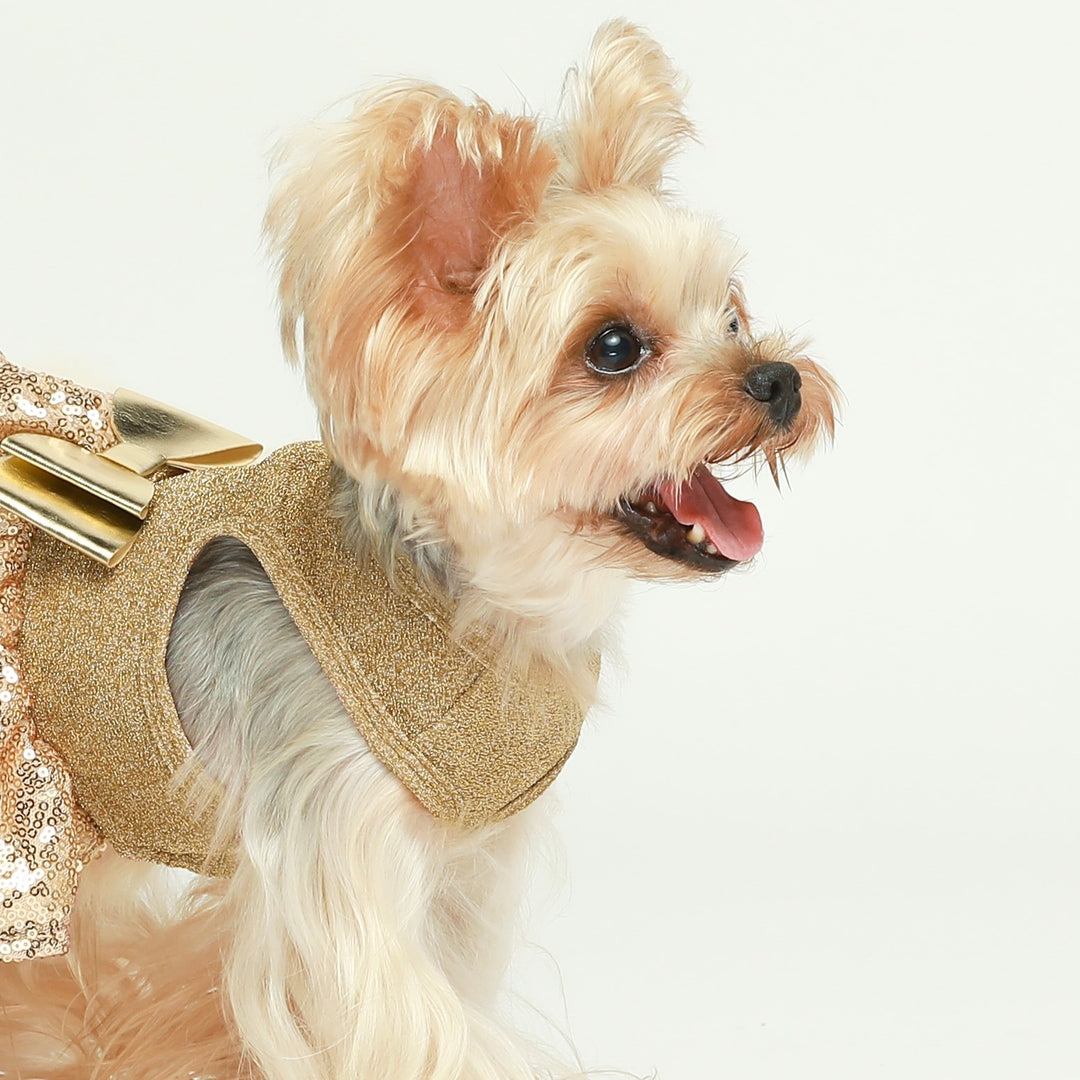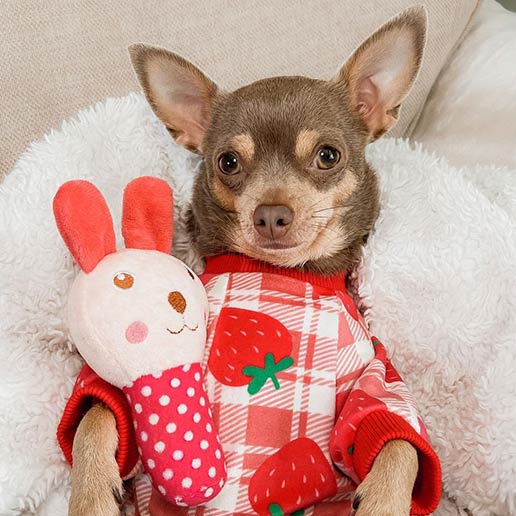Why Is My Puppy Crying in the Crate? Understanding & Solving It
Ever been woken up by those heart-tugging whimpers from your puppy's crate? Or maybe you've watched, puzzled and a little helpless, as your pup fusses in what's supposed to be their snuggly safe spot. It's a normal part of raising a pup, figuring out why they're crying in their crate. But it doesn't have to be too tricky. This article is here to help you with straightforward advice on how to calm your puppy down and make them feel at home in their little den.

What Causes Your Puppy to Cry in the Crate?
Puppies Experience Separation Anxiety
Separation anxiety is kind of like a puppy version of missing their human so much it hurts. Puppies are pack animals and when they're away from their favorite person—you—they can feel lonely and stressed out. Think of it as your pup saying, "Hey, where'd you go? Come back!" If your fur baby follows you around the house like a fluffy shadow, whines when you grab your keys, or has a doggie meltdown when you leave, these could all be clues pointing to separation anxiety.
Puppies Cry to Get Your Attention
Now, let’s talk about those attention-seeking opera singers. Some puppies have mastered the art of drama to get you to notice them. The key is to listen for the tell-tale signs: Are they crying only when they know you’re around? Do the waterworks turn off like a faucet once you show up? That's usually their way of saying, "Hey, look at me! Let's play!" But beware—caving in too often can turn this into a habit that's hard to break.
 Instagram: daisyandviolet
Instagram: daisyandvioletPain or Discomfort Makes Puppies Cry
Just like us, pups can get pretty vocal when something's bugging them. Maybe it's too warm, maybe there's a chill, or perhaps their little bladder is at maximum capacity. Keep an eye on the thermostat and remember: a pee break before bedtime can save you from a serenade in the wee hours.
Puppies Cry When They're Hungry or Thirsty
A rumbling tummy or an empty water bowl could also be behind those sad songs. Sticking to a feeding schedule is like setting an internal food clock for your puppy, so they know when to expect their next meal and aren't left crooning for a snack.
Insufficient Exercise Causes Puppies to Whine
You know how kids get antsy when they haven't burned off energy? Puppies are the same! A good play session can zap that excess energy. So, if your little buddy is restless in their crate, it might just mean they need more fetch time in the yard.
 Instagram: my.man.mochi
Instagram: my.man.mochi Your puppy’s crate cries can be their way of saying all sorts of things. Whether it’s a case of the lonesome blues, a hankering for cuddles, or just an achy belly, tuning into these cues can help you figure out what they need and bring back the quiet times.
How Can You Help Your Puppy Enjoy
Make the Crate Cozy for Your Puppy
Creating a snuggle-worthy crate space is like interior decorating for your pup's personality. Start by throwing in a comfy bed, a blanket that smells like you (for that extra feeling of closeness), and some safe chew toys. It should be cozy, not cramped, and have good vibes only—think of it as your puppy’s personal zen den.
Help Your Puppy Get to Know the Crate Slowly
You wouldn't want to hang out in a place that scared you, right? Same goes for your pup. Make the crate an invite-only VIP lounge by leaving the door open and scattering a few treats inside. Let them explore at their own pace and decide when they're ready to step in. This way, the crate becomes a choice, not a chore.
 Instagram: tallarin_con_carne
Instagram: tallarin_con_carneKeep Your Puppy on a Predictable Daily Schedule
Like clockwork—that's how you want your puppy's day to go. Set regular times for meals, potty breaks, and playtimes so they know what to expect and when. A routine helps your pup feel secure and prevents those ‘surprise’ cries for attention since they’ll know a walk or mealtime is just around the corner.
Start Crate Training Step by Step to Calm Your Puppy
Gradual introductions are the name of the game when it comes to crate training. Encourage them to spend time in the crate while you're in the room before you start stepping out. And always keep the goodbyes low-key to avoid drama. Remember, treats are like gold stars for puppies—reward them when they're chilling calmly in their crate and they'll start seeing it as their happy place.
Ease Your Puppy's Alone Time with Your Scent and Short Leaves
For the clingy pups, start with short absences and build up to longer ones. Leave a piece of clothing that smells like you, or consider a heartbeat toy or calming diffuser to soothe their senses. And keep departures and arrivals mellow to reduce anxiety spikes.
 Instagram: lill_pippin
Instagram: lill_pippin Consult Experts if Your Puppy's Crying Doesn't Stop
If you've tried all the tricks and your little buddy is still singing the blues, it might be time to call in the cavalry. Persistent crying could be a sign of something more serious, and that's where vets and animal behaviorists come in. They're like puppy whisperers, ready to help when things get too hairy.
What Should You Avoid Doing While Crate Training Your Puppy?
Scolding Your Whining Puppy Can Backfire
Picture this: Your little buddy whines, and you scold them. To you, it's saying "quiet down," but to them, it's attention—which can be exactly what they wanted. Plus, it may scare them or make them anxious, which increases the crying episodes. Instead of telling them off, focus on rewarding the quiet moments, and pretty soon, they'll catch on that silence is golden—and get treats!
Never Ignore Your Crying Puppy
Letting your puppy 'cry it out' isn't like skipping a track on your playlist; it might seem easier than dealing with the fuss, but ignoring the problem often backfires. Continuous crying without comfort can lead to trust issues and even more anxiety. Your pup needs to know you're there for them—so instead, listen up and figure out what they need.

Stay Calm When Responding to a Crying Puppy
When your furball starts their crate concert, keep calm and crate on. If they’re crying for attention, wait for a lull in the cries before you check in; this teaches them that quiet behavior gets your presence, not the loud one. And when you do respond, keep it chill—too much excitement can make them think it’s playtime every time they pipe up.
Turn Puppy Crate Crying into Calm Confidence
When your pup starts crying in their crate, it's pretty much like getting a text message from them saying, "I need a little something!" It could mean they're ready for a bathroom break, eager for some play, or just feeling lonely and looking for your smile. Make their crate the ultimate hangout spot with a predictable routine and plenty of praise for quiet time. Things will start to click, and those cries will turn into content sighs. If there's still a hitch, it's all good—reaching out to a vet or dog trainer can make all the difference. Hang in there, stay patient, and you'll both be on your way to serene days and restful nights.
 Instagram: ourbuddygraham
Instagram: ourbuddygrahamPuppy Crate Training FAQ: From Cries to Comfort
Q1: Should I let a puppy cry it out?
No, it's not the best approach. While some whining is normal when puppies adjust to crates, completely ignoring their cries can increase their stress. It’s important to figure out why they're crying and address their needs.
Q2: Is it okay to let a puppy cry in a crate at night?
Crying at night could signal a need for a potty break or just reassurance. Instead of letting them cry all night, check on their needs first, then work on building good crate habits so they'll learn to sleep through the night.
Q3: Should I ignore my dog whining in a crate?
Ignoring isn't the way to go. Whining is communication. Determine if there's a specific reason for the whining, such as needing to go outside or feeling anxious, and address it accordingly.
 Instagram: buenoandfelix
Instagram: buenoandfelixQ4: Should I pick my puppy up when he cries?
Picking them up every time they cry can reinforce the behavior. Instead, try soothing them with your voice or presence without picking them up to help them learn that the crate is safe.
Q5: How to teach a puppy to self-soothe?
Teach self-soothing by making the crate comfortable, establishing a routine, and using calming techniques like a warm blanket or a toy. Reward calm behavior and give them time to settle down on their own.
Q6: How long until the dog stops whining in a crate?
The time it takes can vary widely among dogs. With consistent training and positive reinforcement, many puppies can learn to stop whining within a few days to a few weeks. Patience and consistency are key.














